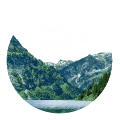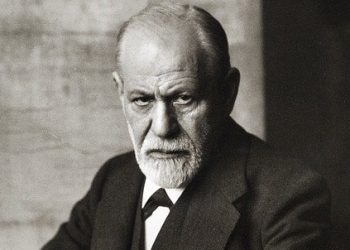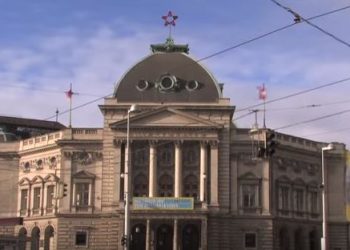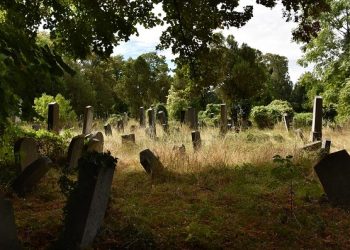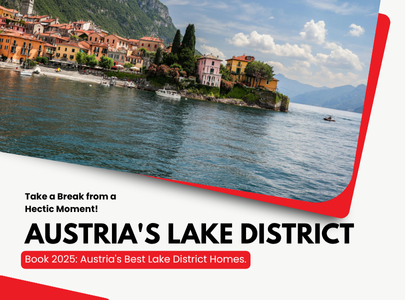The City Council meets in the City Hall, and the Mayor of Vienna works there. Since Vienna is considered a state in its own right within the Republic of Austria, the mayor is also considered the head of the state of Vienna. About 2,000 people work in the City Hall every day.
In addition, the City Hall houses the Vienna City Library as well as the regional library and the regional archive.
Sometimes there are public events inside the City Hall, as well as guided tours for tourists. Even if you arrive and the building is closed to visitors, you can walk around the large square in front of the City Hall or in the well-kept gardens surrounding the building. Almost every week there is a public event in the City Hall square—food festivals, a film festival, a stunt bike competition, ice skating, and of course, a beautiful and romantic Christmas market.
There is no doubt that the City Hall is one of the symbols of Vienna, so you should not miss a visit when you come to Vienna.

The Rathaus (City Hall) – All the Information
The Vienna City Hall (in German, Wiener Rathaus) was built between 1872 and 1883 in the Neo-Gothic style under the supervision of the architect Friedrich von Schmidt, who had previously built the cathedral in Cologne, Germany. The building is reminiscent of a church, especially due to the high tower in its center, which rises to a height of 97.9 meters. At the top of the tower stands a metal statue of the “Iron Rathausmann,” which adds another 6 meters.
The City Hall Tower
Although the City Hall resembles an ancient church, its construction actually managed to anger the church authorities. During the period of its construction, it was customary that buildings not used for religious purposes could not be taller than church buildings. After an angry appeal from the Archbishop of Vienna to Emperor Franz Joseph, it was decided that the City Hall tower would be built only on the condition that it would not be taller than the tower of the nearby Votivkirche (Votive Church), which stands at 99 meters.
As a symbol of freedom against the church, the architect Friedrich von Schmidt decided that the tower itself would be “only” 97.9 meters, but at its top, there would be a statue with a height of 6 meters, making the total height of the tower 104 meters (5 meters above the church tower).
To get to the top of the City Hall tower, you have to climb 331 steps in a spiral staircase (we did it, and it wasn’t easy at all).
The statue at the top of the tower depicts the guardian of the City Hall dressed in medieval knight’s armor, similar to the armor of Emperor Maximilian I. In 1985, it was decided to create an exact copy of the statue and place it in the City Hall park, where it stands to this day.
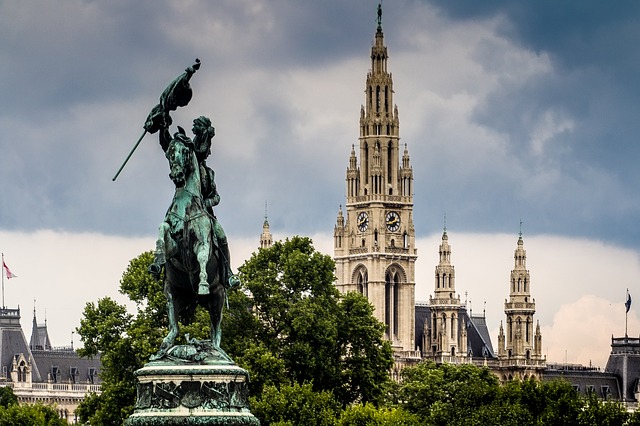
The Magnificent Rooms of the City Hall
The City Hall building is the workplace of 2,000 municipal employees. A visit inside the City Hall building is absolutely spectacular, during which you can see magnificent reception rooms and event halls that are mostly used for meetings, concerts, or balls. The most significant rooms in the City Hall are:
Council Chamber
Since the city of Vienna is not only the capital of Austria but is also considered one of the 9 states that make up the Austrian Republic, it has its own council. In this room, the Vienna Council, consisting of about 100 members elected for a 5-year term, convenes. The most impressive element in the council chamber is the magnificent chandelier hanging in its center. Its diameter is 5 meters and it has 213 lamps! The chandelier was made from a single piece and weighs about 3.5 tons! In the past, the chandelier was placed relatively low, and due to the intensity of the heat emitted from it, the room became a real sauna. In the 1960s, it was decided to lower the chandelier, shorten it, and hang it again one meter higher.
The magnificent wooden ceiling is decorated with 22 gold-leaf roses. Below the ceiling, there are several spectacular murals depicting events from the history of Vienna and Austria. Most of the windows in this room were restored according to the original plans after they were destroyed during World War II.
Festival Hall
The Festival Hall in the City Hall was the largest in the entire country in the 19th century. It is 71 meters long, 20 meters wide, and 18.5 meters high. It is mainly used for large and important events such as balls (even the WIZO ball is held there), exhibitions, and concerts. Theoretically, about 1,500 couples could dance the waltz simultaneously in the Festival Hall’s dance area. At the front of the hall, there are two places for musicians, and they are decorated with portraits of four great composers: Mozart, Haydn, Gluck, and Schubert. The hall is illuminated by no less than 16 magnificent chandeliers.
The Inner Courtyard (Arkadenhof)
In the center of the City Hall, there is a spacious inner courtyard. The courtyard covers an area of 2,804 square meters, making it one of the largest inner courtyards in Europe. In size, it is comparable to the courtyard in the Doge’s Palace in Venice. In recent upgrade works, the architect Silja Tillner built a retractable roof that allows events to be held in the City Hall courtyard even if the weather is not sunny and beautiful.
Senate Room
According to Friedrich Schmidt’s original plan, the Senate Room is indeed used for the city’s senate. This is one of the most impressive rooms in the City Hall. One of the most beautiful elements in this room is the beautiful and exquisitely decorated heating stove. The stove was a gift from the guild of stove makers in 1885. In addition, the walls of the room are covered with damask silk fabrics and the ceiling is beautifully decorated. There are also many portraits of Vienna’s mayors from past years throughout the room (the oldest portrait is moved to the museum to make room for the portrait of the last serving mayor).
The Stone Halls (Steinsäle) and the North and South Buffet Rooms
There are two Stone Halls in the City Hall. The first hall is mainly used for wedding ceremonies and press conferences. A magnificent tapestry depicting the reconstruction of the city after 1945, the coat of arms of the city of Vienna, and a painting of Vienna from the 19th century make this hall a perfect place for such events. The second Stone Hall is located next to the Hall of Coats of Arms and is mostly used for weddings.
The rooms adjacent to the large event hall are the buffet rooms. Originally, they were intended for events for the nobility, but they were converted into music and buffet rooms (hence their name). Today, the North Buffet Room serves as a conference room. Its walls are covered with silk fabrics, magnificent chandeliers hang from the ceiling, and the ceiling is made of beautifully decorated wood. The South Buffet Room is now used as the mayor’s office.
Halls of Coats of Arms (Wappensäle)
These rooms have a more modern look and display the coats of arms from all 9 states of the Austrian Republic. These rooms also have chandeliers, a wooden ceiling, and damask silk fabrics.
The Grand Staircase
When entering the City Hall, it is hard not to be impressed by the wonderful staircase that leads to the upper floors. The staircase is made of stone and covered with royal red carpets. Alongside the staircase, there are impressive stone pillars, colorful windows, and magnificent chandeliers. The staircase ultimately leads to the large event hall. On the mezzanine floor, there is a room for storing coats and bags for guests invited to events. This is the largest cloakroom in Austria with no less than 1,700 coat hangers.
The Park in the City Hall Square (Rathauspark)
The park surrounding the City Hall was intended to be a city park for the residents. The person responsible for planning the park was Dr. Rudolf Siebeck, who was appointed by Emperor Franz Joseph I. The garden designed by Siebeck covers about 40,000 square meters and was opened to visitors in 1873. The garden is divided into two symmetrical parts: the northern part (Nordpark) is near the University of Vienna building, and the southern part (Südpark) is near the Parliament building.
In the center, between the gardens, there is a huge square that looks like a wide street leading to the City Hall. The City Hall square is frequently used for various cultural events such as the film festival in the summer months, Christmas markets, and ice skating on cold winter days. In addition, the square is used for various demonstrations.
The parks themselves are covered with green lawns, trees, and colorful flowers. In the center of the parks, there are two identical fountains surrounded by benches for the residents’ well-being. The park’s trees are very old, and some of them came from exotic places like Japan.
Statues in the Park Square
Near the large square of the City Hall, there are eight large statues of important personalities in Austrian history. In the past, these statues stood on the Elizabeth Bridge near St. Charles’s Church. One of the statues is of Joseph von Sonnenfels, who was Jewish and also a jurist, one of the leaders of the Illuminati movement in Austria, and a close friend of Mozart. During the Nazi regime, his statue was replaced, but after the war, it was returned to its place in the City Hall square.
Inside the parks on the sides of the large square, there are several smaller statues of important figures such as the composers Johann Strauss and Joseph Lanner. There are also statues of Austrian politicians standing right next to the Ringstraße.
Children’s Playground
Next to the park, there is a playground located near Grillparzerstraße (next to the Austria Trend Hotel).
Guided Tours of the City Hall
If you were impressed by the variety of magnificent rooms in the City Hall, you will be pleased to know that there are guided tours inside the building. During the tour, you can see the rooms we wrote about in the article.
- Tour Times: Mondays, Wednesdays, and Fridays at 1:00 PM (except on days when the council meets or on national holidays).
- Prices: Free. No need to register in advance.
- Please Note: The tours are offered in German, but this is a good opportunity to see the building from the inside. You can take a free audio guide in English (only during the times when the guided tour takes place and after presenting an ID).
- Meeting Point: City Information, Friedrich-Schmidt-Platz 1
- For inquiries: stadtinformation@post.wien.gv.at
Essential Information for Visiting the Rathaus
When to Arrive?
The City Hall building is magnificent both during the day and at night. Even if you had a busy day and can only get to the City Hall in the evening, it is well worth it. The building is wonderfully illuminated (especially during the Christmas season), and the area is safe and pleasant even in the late evening hours.
How to Get There?
The most convenient way to get to the City Hall is by subway. The purple line, U2, stops at the station called Rathaus. The exit from the subway station is at the back of the City Hall. You need to walk about 5 minutes to reach the City Hall square and its impressively beautiful front.
Tram lines 1, 71, and D also stop right in front of the City Hall building. The stop is called Rathausplatz/Burgtheater.
Address: Friedrich-Schmidt-Platz 1, 1010 Wien
Map:

